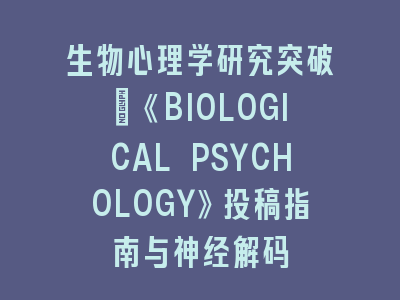一、倒三角结构的三阶模型

1. 大领域(30%篇幅)
核心任务:用3-4句勾勒研究领域的全貌
关键要素:
- 共识性知识:领域内公认的基础理论/现象
- 核心概念定义:避免术语歧义(如”免疫衰老”需明确指细胞层面或系统层面)
- 现实意义:疾病负担/经济成本/技术瓶颈
顶刊案例(Cell 2023):
“T cell exhaustion is a hallmark of chronic viral infections and cancer (Nature 2021), characterized by progressive loss of effector functions. Over 60% of advanced melanoma patients fail to respond to PD-1 blockade due to exhausted T cell states (NEJM 2022), creating an annual $3.2 billion therapeutic gap.”
避坑指南:
- ✖ 避免文献堆砌(如连续5句引用)
- ✔ 用定量描述增强说服力(如”$3.2 billion”)
2. 细分问题(50%篇幅)
核心任务:通过三层次论证锁定研究缺口
- 文献批判:
- “While previous studies established A→B (Science 2020), the role of C remains controversial”
- 技术局限:
- “Current methods (e.g., bulk RNA-seq) cannot resolve D at single-cell resolution”
- 临床矛盾:
- “Paradoxically, E inhibits F in vitro but promotes F in vivo (Cell 2022)”
句式模板:
“Although [已知1], [未知2] has not been explored. [方法1] studies suggested [结论A], whereas [方法2] supported [结论B], implying [矛盾点].”
案例拆解(Nature Immunology 2024):
“While TOX transcription factor drives exhaustion (Science 2019), its downstream metabolic regulators are unclear. Bulk proteomics implicated mitochondrial dysfunction (Cell Metab 2021), but scRNA-seq failed to confirm this (Immunity 2023), suggesting analytical limitations.”
3. 本研究(20%篇幅)
黄金结构:
- 假设/目标:
- “We hypothesized that X mediates Y via Z pathway”
- 方法创新:
- “Using [技术组合], we [创新性策略]”
- 价值锚点:
- “This provides the first evidence that…”
案例示范(Science Translational Medicine 2023):
“Here, we integrated CRISPR screens with spatial metabolomics to map exhaustion-specific metabolic vulnerabilities. Our data reveal that lactate dehydrogenase-C (LDH-C) sustains exhausted T cells through histone lactylation, proposing LDH-C inhibition as a combinatorial strategy with PD-1 blockade.”
二、逻辑衔接技巧
1. 漏斗式过渡词
| 层级 | 过渡词 | 例句 |
|---|---|---|
| 领域 | Broadly/Generally | “Broadly, neurodegenerative…” |
| 缺口 | However/Notably | “Notably, how α-synuclein…” |
| 研究 | Herein/Therefore | “Therefore, we developed…” |
2. 文献引用三阶法

- 奠基性:3-5篇高引论文(>1000次)
- 关键进展:近5年高影响力论文(IF>10)
- 最新争议:2-3篇近2年对立观点论文
3. 时态控制矩阵
| 内容类型 | 时态 | 案例 |
|---|---|---|
| 领域共识 | 现在时 | “T cells play a key role” |
| 前人研究结果 | 过去时 | “Zhang et al. reported” |
| 未解决问题 | 现在完成时 | “It has not been clear” |
| 本研究行为 | 过去时 | “We developed” |
三、常见结构缺陷与修复
1. 头重脚轻型
问题:大领域占70%篇幅,未收敛到具体问题
修复:
- 删除3句宏观描述
- 增加1句技术瓶颈分析(如”Current imaging lacks μm-scale dynamic tracking”)
2. 缺口模糊型
问题:仅说”few studies”未说明缺失什么
修复模板:
“Prior work focused on [A], leaving [B] unexplored. Specifically, whether [C] affects [D] under [条件] remains unknown.”
3. 贡献夸大型
问题:宣称”first study”但未查全文献
修复步骤:
- PubMed检索:
("first" OR "novel") AND [你的关键词] - 在Introduction中对比:
“Unlike previous [方法] studies (Ref 1,2), our [新方法] enables [独特优势]”
四、AI辅助优化提示词
# ChatGPT指令模板:
"""
你作为Nature系列期刊编辑,请按以下要求优化Introduction:
1. 第一段:用2句定义研究领域,包含1个定量数据(发病率/经济负担)
2. 第二段:综述3个关键文献进展,指出1个技术局限+1个理论矛盾
3. 第三段:提出本研究假设,用'By combining X with Y, we...'句式说明方法创新
4. 全文保持倒三角结构,用'However'/'Notably'过渡
输出时标注各部分字数占比(目标:40%:40%:20%)
"""
五、学科特化案例库
1. 肿瘤免疫学
倒三角路径:
免疫治疗临床响应率 → T细胞耗竭机制争议 → 本研究的代谢调控发现
2. 纳米材料
倒三角路径:
催化剂稳定性瓶颈 → 界面水分子作用未知 → 本研究的原位表征技术
3. 神经科学
倒三角路径:
神经退行性疾病负担 → α-synuclein传播机制矛盾 → 本研究的突触间传递模型
通过这种结构化写作,可使Introduction同时具备 学术深度 与 读者友好性 。
© 版权声明
本文由分享者转载或发布,内容仅供学习和交流,版权归原文作者所有。如有侵权,请留言联系更正或删除。
相关文章

暂无评论...




















